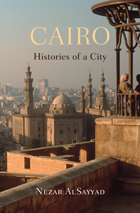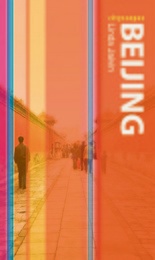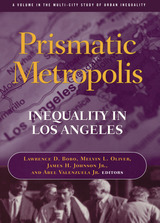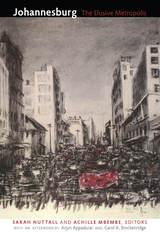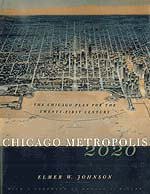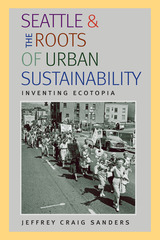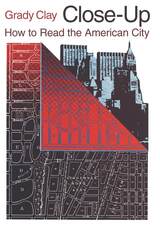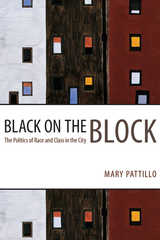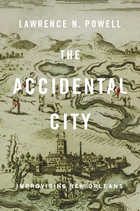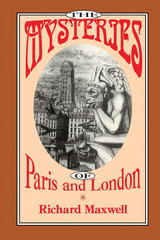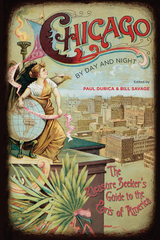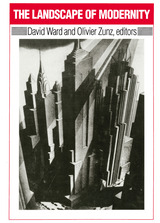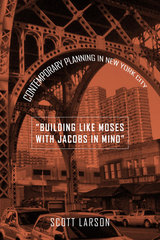Big CitiesCollection by Cassandra Verhaegen (13 items)These'll get your interest levels sky-high. Includes the following tags:
1916-2006, American City, Asia, Beijing, British, Buildings, Chicago Metropolitan Area, Chicago Metropolitan Area (Ill.), China, Cities and towns, City and town life, City planning, City Planning & Urban Development, Class, Clay, Grady, Close - Up, Comparative literature, Discrimination in employment, East, Egypt, Equality, Inequality, Jacobs, Jane, Larson, Scott, London, London (England), Los Angeles, Louisiana, Mind, Minorities, Modernity, Night, Paris, Paris (France), Read, Social classes, South Africa, Sustainable development, Travel, Twenty - First Century
See More
|
Cairo
by Nezar AlSayyad
Harvard University Press, 2013
From its earliest days as a royal settlement fronting the pyramids of Giza to its current manifestation as the largest metropolis in Africa, Cairo has forever captured the urban pulse of the Middle East. In Cairo: Histories of a City, Nezar AlSayyad narrates the many Cairos that have existed throughout time, offering a panoramic view of the city’s history unmatched in temporal and geographic scope, through an in-depth examination of its architecture and urban form.
1
|
Beijing
by Linda Jaivin
Reaktion Books, 2014
Reaktion’s new CityScopes series consists of concise, illustrated guides that provide a social and urban history from a city’s beginnings to the present day. Written by authors with unique and intimate knowledge of each city, these books offer fascinating vignettes on the quintessential and the quirky. In the first book of the series, Linda Jaivin explores a city at the heart of one of the world’s oldest civilizations and the capital of its newest superpower—Beijing. In China’s central city, Jaivin finds thousands of years of history dating back to our ancestors, a story that includes dynastic empires, sieges, massacres, rebellions, and political spectacle. Recounting the lively history of the city, Jaivin discovers the Peking Man and the capital’s many legendary incarnations, such as the Cambaluc that Marco Polo wrote about in awe. She reveals it to be full of charismatic personalities and dramatic events, a place that has produced some of China’s most iconic works of literature, theater, and music. She also offers thought-provoking essays on contemporary topics ranging from the elemental problems of air and water to the vibrant art scene and the architectural adventurism of the city’s “hyperbuildings.” Generously illustrated, this guide provides helpful maps and suggested itineraries as well as practical recommendations for hotels, restaurants, museums, and other sites. Taking readers to lakeshores, down into the subway, and around the bustling art districts, Beijing is the ultimate introduction to this extraordinary city for travelers and armchair explorers alike.
2
|
Prismatic Metropolis
edited by Lawrence D. Bobo, Melvin L. Oliver, Jr. James H. Johnson and Abel, Jr Valenzuela
Russell Sage Foundation, 2000
This book cuts through the powerful mythology surrounding Los Angeles to reveal the causes of inequality in a city that has weathered rapid population change, economic restructuring, and fractious ethnic relations. The sources of disadvantage and the means of getting ahead differ greatly among the city's myriad ethnic groups. The demand for unskilled labor is stronger here than in other cities, allowing Los Angeles's large population of immigrant workers with little education to find work in light manufacturing and low-paid service jobs. A less beneficial result of this trend is the increased marginalization of the city's low-skilled black workers, who do not enjoy the extended ethnic networks of many of the new immigrant groups and who must contend with persistent negative racial stereotypes. Patterns of residential segregation are also more diffuse in Los Angeles, with many once-black neighborhoods now split evenly between blacks, Hispanics, Asians, and other minorities. Inequality in Los Angeles cannot be reduced to a simple black-white divide. Nonetheless, in this thoroughly multicultural city, race remains a crucial factor shaping economic fortunes. A Volume in the Multi-City Study of Urban Inequality
3
|
Johannesburg
edited by Sarah Nuttall and Achille Mbembe
contributions by AbdouMaliq Simone Duke University Press, 2008
Johannesburg: The Elusive Metropolis is a pioneering effort to insert South Africa’s largest city into urban theory, on its own terms. Johannesburg is Africa’s premier metropolis. Yet theories of urbanization have cast it as an emblem of irresolvable crisis, the spatial embodiment of unequal economic relations and segregationist policies, and a city that responds to but does not contribute to modernity on the global scale. Complicating and contesting such characterizations, the contributors to this collection reassess classic theories of metropolitan modernity as they explore the experience of “city-ness” and urban life in post-apartheid South Africa. They portray Johannesburg as a polycentric and international city with a hybrid history that continually permeates the present. Turning its back on rigid rationalities of planning and racial separation, Johannesburg has become a place of intermingling and improvisation, a city that is fast developing its own brand of cosmopolitan culture. The volume’s essays include an investigation of representation and self-stylization in the city, an ethnographic examination of friction zones and practices of social reproduction in inner-city Johannesburg, and a discussion of the economic and literary relationship between Johannesburg and Maputo, Mozambique’s capital. One contributor considers how Johannesburg’s cosmopolitan sociability enabled the anticolonial projects of Mohandas Ghandi and Nelson Mandela. Journalists, artists, architects, writers, and scholars bring contemporary Johannesburg to life in ten short pieces, including reflections on music and megamalls, nightlife, built spaces, and life for foreigners in the city. Contributors: Arjun Appadurai, Carol A. Breckenridge, Lindsay Bremner, David Bunn, Fred de Vries, Nsizwa Dlamini, Mark Gevisser, Stefan Helgesson, Julia Hornberger, Jonathan Hyslop, Grace Khunou, Frédéric Le Marcis, Xavier Livermon, John Matshikiza, Achille Mbembe, Robert Muponde, Sarah Nuttall, Tom Odhiambo, Achal Prabhala, AbdouMaliq Simone
4
|
Chicago Metropolis 2020
by Elmer W. Johnson
University of Chicago Press, 2001
In the late nineteenth century, Chicago was a commercial colossus, a city growing more quickly than New York, flooded with industrial money and brassy confidence but ravaged by great income disparities, dangerously lax health standards, and labor upheavals. For Chicago to become the city it could be, civic leaders recognized the need for order and planning, both to solve Chicago's problems and to prepare it for a prosperous future. The result was architect Daniel Burnham's 1909 plan for Chicago, a model of urban planning, aesthetic sophistication, and technical achievement. Nearly a century later, Chicago, like all cities, faces similar dilemmas: how to reconcile privatism with public control, growth with restraint, wealth with poverty, and beauty with industry. And as it did a hundred years ago with the Burnham Plan, the Commercial Club has sponsored a wholly contemporary plan for the city's future development. Written by Elmer W. Johnson, a lawyer and civic leader, Chicago Metropolis 2020 is a guide for those in all spheres of influence who are working to make cities economically and socially vigorous while addressing the greatest problems modern metropolises face. While Burnham's plan primarily addressed architecture and spatial planning, Chicago Metropolis 2020 addresses all facets of urban life, from public education to suburban sprawl, from transportation to social and economic segregation, with the expressed goal of continuing Chicago's tradition of renewal and foresight. Chicago Metropolis 2020 is an ambitious and necessary plan for a major city at the turn of the century. In scope and execution, it aims at nothing less than economic vibrancy, quality of life, and equity of opportunity.
5
|
Seattle and the Roots of Urban Sustainability
by Jeffrey Craig Sanders
University of Pittsburgh Press, 2010
Seattle, often called the “Emerald City,” did not achieve its green, clean, and sustainable environment easily. This thriving ecotopia is the byproduct of continuing efforts by residents, businesses, and civic leaders alike. In Seattle and the Roots of Urban Sustainability, Jeffrey Craig Sanders examines the rise of environmental activism in Seattle amidst the “urban crisis” of the 1960s and its aftermath.
6
|
Close-Up
by Grady Clay
University of Chicago Press, 1980
"Grady Clay looks hard at the landscape, finding out who built what and why, noticing who participates in a city's success and who gets left in a 'sink,' or depressed (often literally) area. Clay doesn't stay in the city; he looks at industrial towns, truck stops, suburbs—nearly anywhere people live or work. His style is witty and readable, and the book is crammed with illustrations that clarify his points. If I had to pick up one book to guide my observations of the American scene, this would be it."—Sonia Simone, Whole Earth Review "The emphasis on the informal aspects of city-shaping—topographical, historical, economic and social—does much to counteract the formalist approach to American urban design. Close-Up...should be required reading for anyone wishing to understand Americans and their cities."—Roger Cunliffe, Architectural Review "Close-Up is a provocative and stimulating book."—Thomas J. Schlereth, Winterthur Portfolio "Within this coherent string of essays, the urban dweller or observer, as well as the student, will find refreshing strategies for viewing the environmental 'situations' interacting to form a landscape."—Dallas Morning News "Clay's Close-Up, first published in 1973, is still a key book for looking at the real American city. Too many urban books and guidebooks concentrate on the good parts of the city....Clay looks at all parts of the city, the suburbs, and the places between cities, and develops new terms to describe parts of the built environment—fronts, strips, beats, stacks, sinks, and turf. No one who wants to understand American cities or to describe them, should fail to know this book. The illustrations are of special interest to the guidebook writer."—American Urban Guidenotes
7
|
Black on the Block
by Mary Pattillo
University of Chicago Press, 2007
In Black on the Block, Mary Pattillo—a Newsweek Woman of the 21st Century—uses the historic rise, alarming fall, and equally dramatic renewal of Chicago’s North Kenwood–Oakland neighborhood to explore the politics of race and class in contemporary urban America.
There was a time when North Kenwood–Oakland was plagued by gangs, drugs, violence, and the font of poverty from which they sprang. But in the late 1980s, activists rose up to tackle the social problems that had plagued the area for decades. Black on the Block tells the remarkable story of how these residents laid the groundwork for a revitalized and self-consciously black neighborhood that continues to flourish today. But theirs is not a tale of easy consensus and political unity, and here Pattillo teases out the divergent class interests that have come to define black communities like North Kenwood–Oakland. She explores the often heated battles between haves and have-nots, home owners and apartment dwellers, and newcomers and old-timers as they clash over the social implications of gentrification. Along the way, Pattillo highlights the conflicted but crucial role that middle-class blacks play in transforming such districts as they negotiate between established centers of white economic and political power and the needs of their less fortunate black neighbors.
“A century from now, when today's sociologists and journalists are dust and their books are too, those who want to understand what the hell happened to Chicago will be finding the answer in this one.”—Chicago Reader
“To see how diversity creates strange and sometimes awkward bedfellows . . . turn to Mary Pattillo's Black on the Block.”—Boston Globe
8
|
The Accidental City
by Lawrence N. Powell
Harvard University Press, 2012
This is the story of a city that shouldn’t exist. In the seventeenth century, what is now America’s most beguiling metropolis was nothing more than a swamp: prone to flooding, infested with snakes, battered by hurricanes. But through the intense imperial rivalries of Spain, France, and England, and the ambitious, entrepreneurial merchants and settlers from four continents who risked their lives to succeed in colonial America, this unpromising site became a crossroads for the whole Atlantic world.
9
|
Chicago by Day and Night
edited by Paul Durica and Bill Savage
Northwestern University Press, 2013
Chicago by Day and Night: The Pleasure Seeker’s Guide to the Paris of America is an actual guidebook to Chicago for visitors to the World’s Columbian Exposition of 1893. This unauthorized handbook to the rowdy city outside the elegant fairgrounds explores pleasures high and low. The theaters and music, architectural glories, parks and boulevards, churches and synagogues, and other elevated pursuits the authors included in 1893 gave the book a veneer of high culture. But the book owed its popularity to its insider tips about Chicago's lurid and louche entertainments—drink, gambling, and sex. With a wink and tongue firmly in cheek, the original authors condemned Gilded Age vice while offering curious travelers precise directions to the dubious, decadent, and debauched quarters of the Windy City. To introduce this compulsively readable, gift-quality journey through the Chicago of 1893, Chicago writers and humorists Paul Durica and Bill Savage have added an expert introduction to Gilded Age Chicago and the World's Columbian Exposition. Showcasing the first Ferris wheel, dazzling new electrification technologies, and exhibits from around the world, the Exposition was Chicago’s chance to prove it had risen from the ashes of the Great Fire and would claim a place among the world’s great cities. Both a perfect keepsake or gift for Chicago travelers as well as an invaluable text for readers interested in the history of Chicago, the Midwest, or Gilded Age urban life, Chicago by Day and Night is a beloved classic of Chicago writing.
11
|
Landscape of Modernity
edited by David Ward and Olivier Zunz
Russell Sage Foundation, 1992
New York City stands as the first expression of the modern city, a mosaic of disparate neighborhoods born in 1898 with the amalgamation of the five boroughs and shaped by the passions of developers and regulators, architects and engineers, politicians and reformers, immigrant entrepreneurs and corporate builders. Through their labor, their ideals, and their often fierce battles, the physical and social dimensions—the landscape—of the modern city were forged. The original essays in The Landscape of Modernity tell the compelling story of the growth of New York City from 1900 to 1940, from the beginnings of its skyscraper skyline to the expanding reaches of suburbanization. At the beginning of the century, New York City was already one of the world's leading corporate and commercial centers. The Zoning Ordinance of 1916, initially proposed by Fifth Avenue merchants as a means of halting the uptown spread of the garment industry, became the nation's first comprehensive zoning law and the proving ground for a new occupation—the urban planner. During the 1920s, frenzied development created a vertical metamorphosis in Manhattan's booming business district, culminating in its most spectacularly modern icon, the Empire State Building. The city also spread laterally, with the controversial development of subway systems and the creation of the powerful Port of New York Authority, whose new bridges and tunnels decentralized the population and industry of New York. New York's older ethnic enclaves were irrevocably altered by this new urban landscape: the Lower East Side's Jewish community was nearly dismantled by the flight of the garment industry and the attractiveness of new suburbs, while Little Italy fought government forces eager to homogenize commercial use of the streets by eliminating the traditional pushcart peddlers. Illustrated with striking photographs and maps, The Landscape of Modernity links important scenes of growth and development to the larger political, economic, social, and cultural processes of the early twentieth century.
12
|
"Building Like Moses with Jacobs in Mind"
by Scott Larson
Temple University Press, 2013
The antagonism between urbanist and writer Jane Jacobs and master builder Robert Moses may frame debates over urban form, but in "Building Like Moses with Jacobs in Mind," Scott Larson aims to use the Moses-Jacobs rivalry as a means for examining and understanding the New York City administration's redevelopment strategies and actions. By showing how the Bloomberg administration's plans borrow selectively from Moses' and Jacobs' writing, Larson lays bare the contradictions buried in such rhetoric and argues that there can be no equitable solution to the social and economic goals for redevelopment in New York City with such a strategy. "Building Like Moses with Jacobs in Mind" offers a lively critique that shows how the legacies of these two planners have been interpreted—and reinterpreted—over time and with the evolution of urban space. Ultimately, he makes the case that neither figure offers a meaningful model for addressing stubborn problems—poverty, lack of affordable housing, and segregation along class and racial lines—that continue to vex today's cities.
13
|
|
| Click here to go to the beginning. | |||||||||||||
